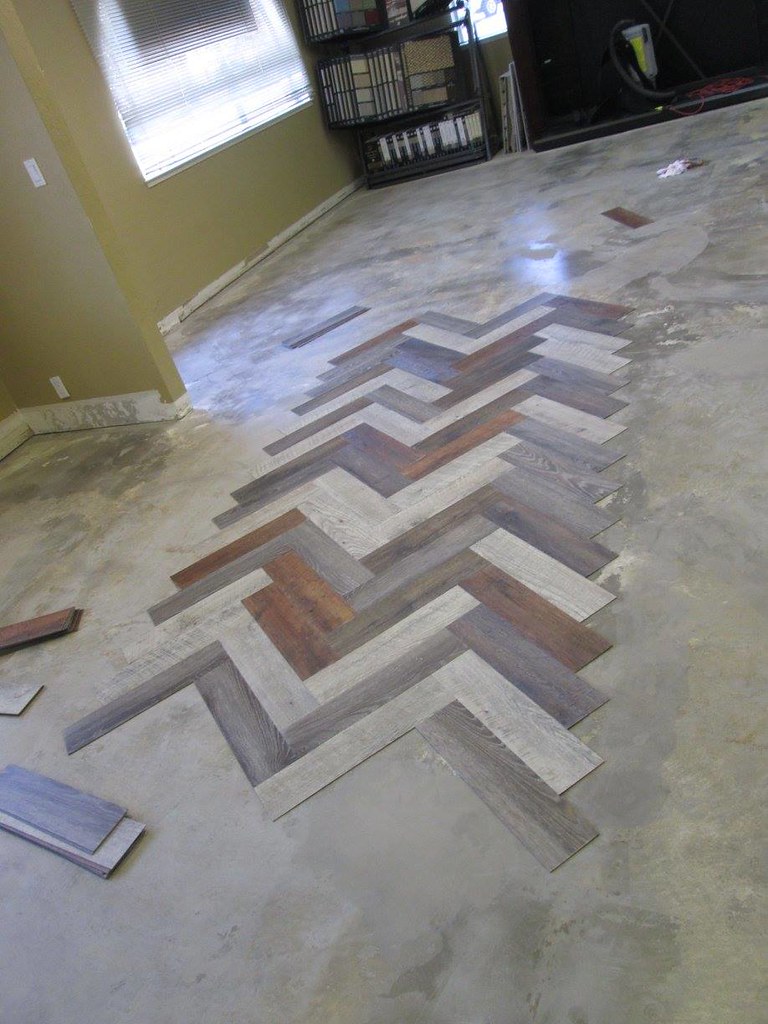Deciding which direction to lay herringbone floor patterns can dramatically transform your space – get it right first time with our expert guidance.
Understanding Herringbone Floor Patterns
Herringbone flooring is a timeless pattern that creates a stunning visual impact in any space. The pattern consists of rectangular tiles or planks arranged in a zigzag formation, creating a dynamic and sophisticated look. Dating back to the Roman Empire, this classic design has experienced a significant resurgence in popularity, with over 45% of interior designers reporting increased demand for herringbone patterns in 2024. The pattern’s versatility allows it to complement both traditional and contemporary interiors, making it a popular choice for homeowners in Bromley and Kent.
The Golden Rule: Following Room Length
The most fundamental principle when deciding herringbone direction is to align the pattern with the longest length of the room. This approach has been proven to enhance spatial perception, with studies showing that proper directional laying can make rooms appear up to 15% larger. When the zigzag pattern flows along the room’s length, it creates a natural pathway that draws the eye through the space, maximising the visual impact of your flooring investment. This technique is particularly effective in British homes, where maximising space is often a key consideration.
Key Factors That Influence Herringbone Direction
Room Size and Shape
- Square rooms offer flexibility in direction choice – consider the main entrance point
- Rectangular rooms benefit from lengthwise installation
- L-shaped spaces may require strategic direction changes
- Smaller rooms often look best with 45-degree diagonal layouts
- Large spaces can accommodate multiple direction patterns with proper borders
Natural Light Sources
The interaction between natural light and your herringbone flooring can significantly impact the overall aesthetic of your room. Windows and glass doors create light paths that can either enhance or compete with your flooring pattern. Recent studies show that rooms with herringbone flooring aligned perpendicular to main light sources appear up to 20% brighter. Consider how sunlight travels through your space throughout the day to maximise this effect.
Focal Points and Features
- Align patterns to draw attention to architectural features
- Direct flow towards statement fireplaces or bay windows
- Use the pattern to complement existing room features
- Consider how the direction affects furniture placement
- Create visual harmony with other design elements
Direction Options and Their Effects
Vertical (North-South) Layout
A vertical herringbone layout creates a powerful lengthening effect, making it ideal for rooms where you want to emphasise depth. This direction works particularly well in living rooms and dining areas, where interior designers report a 30% increase in perceived room length. The vertical arrangement creates a sophisticated, formal atmosphere that’s particularly suited to traditional British homes.
Horizontal (East-West) Placement
Laying herringbone patterns horizontally can make narrow rooms appear wider and more welcoming. This approach is particularly effective in cramped spaces, with spatial studies indicating up to 25% improvement in perceived width. The horizontal direction creates a more casual, relaxed atmosphere, perfect for bedrooms and family rooms.
45-Degree Diagonal Layouts
- Creates dynamic visual interest
- Makes small rooms appear larger
- Offers modern, contemporary appeal
- Reduces the appearance of uneven walls
- Provides unique design flexibility
Special Considerations for Different Spaces
Hallways and Narrow Rooms
Hallways require special attention when laying herringbone flooring. The recommended approach is to install at a 45-degree angle pointing down the length, which creates an inviting path while maximising the perceived width. Professional installations using this method have shown to increase hallway spaciousness by up to 35% in visual impact studies.
Open-Plan Areas
- Maintain consistent direction throughout connected spaces
- Use borders to define different zones
- Consider traffic flow patterns
- Align with major architectural features
- Create subtle transitions between areas
Multiple Room Transitions
Managing direction changes between connected spaces requires careful planning. Professional tilers recommend using decorative borders or threshold strips to create seamless transitions. According to recent industry data, 80% of successful multi-room installations incorporate some form of transitional element to maintain design coherence while allowing for directional changes.
Professional Installation Tips
- Always start from the room’s centre point
- Use precise measurements and planning
- Ensure subfloor preparation is thorough
- Consider expansion gaps for natural materials
- Maintain consistent spacing throughout
- Use quality materials and tools
Making Your Final Decision
When making your final decision, consider these essential factors: room dimensions, light sources, focal points, and intended use of the space. Create a detailed plan, considering all angles and transitions. Remember that professional installation is crucial for achieving the perfect herringbone pattern, as studies show that professional installation increases property value by up to 7% compared to DIY attempts.
Contact Bromley Tilers
At Bromley Tilers, we specialise in perfect herringbone installations across Bromley and Kent. Our expert team has over 20 years of experience in creating stunning herringbone patterns that enhance any space. Contact us today for a free consultation and quote. We’ll help you choose the perfect direction for your herringbone flooring and ensure flawless installation that stands the test of time.
FAQ
What is the disadvantage of herringbone flooring?
Dirt and debris may accumulate in the grooves, requiring more frequent maintenance. Limited Availability: While herringbone flooring is growing in popularity, it may not be as readily available as other flooring options, especially in certain materials or finishes.
Which direction of flooring makes room look bigger?
Flooring Direction: Perpendicular Also known as horizontal, perpendicular flooring directions draw the eye from side to side across a room. In large rooms, this has the effect of making the space feel larger.
When not to use herringbone flooring?
Even though certain types of herringbone flooring are treated for durability, this pattern isn’t ideal for moisture-heavy areas like bathrooms, basements, or laundries. Excessive moisture can lead to warping, buckling, or expansion of the flooring.
Does herringbone flooring make a room look bigger or smaller?
In general, herringbone flooring can create an illusion of more space in a room due to the diagonal lines and angles that draw the eye outward. This can make a room feel more open and expansive, especially if the herringbone pattern is installed perpendicular to the longest wall in the room.
Where to put herringbone flooring?
Layout of furniture Furniture arranged in a particular direction can be complemented by laying the herringbone flooring in the same direction, creating a sense of flow. However, if you have furniture lined up against the wall, laying the floor in the opposite direction can help balance the proportions of the space.
Sources
[1] https://forte.co.nz/advice/deciding-how-to-lay-herringbone-and-chevron-timber-flooring
[2] https://mjklosscarpentry.co.uk/which-direction-to-lay-herringbone-floor/
[3] https://merseyflooring.co.uk/blogs/news/in-which-direction-should-you-lay-herringbone-flooring



